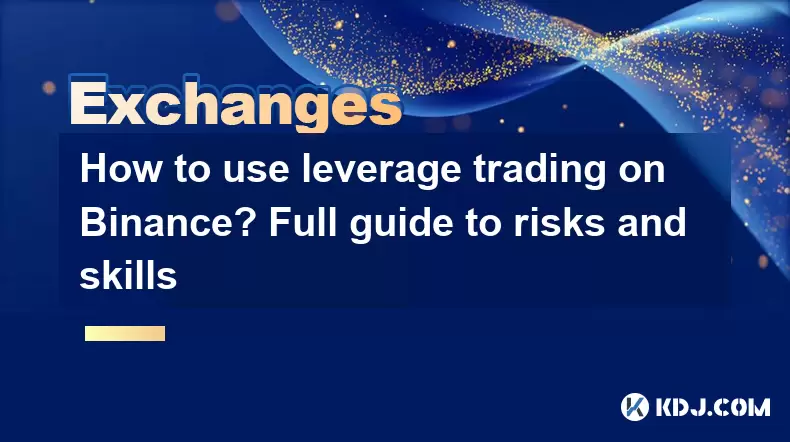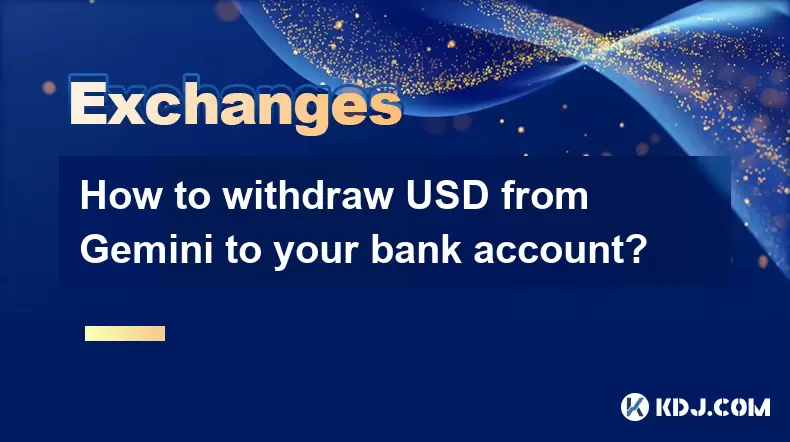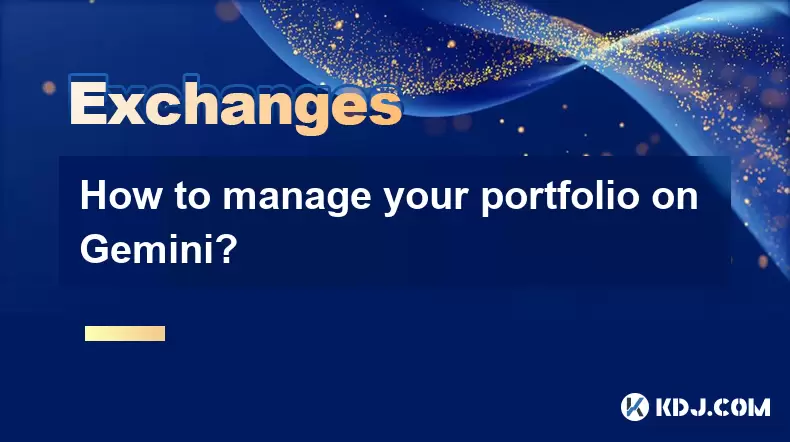-
 Bitcoin
Bitcoin $115000
0.12% -
 Ethereum
Ethereum $3701
4.50% -
 XRP
XRP $3.081
2.99% -
 Tether USDt
Tether USDt $0.0000
-0.01% -
 BNB
BNB $767.9
1.45% -
 Solana
Solana $169.5
3.13% -
 USDC
USDC $0.9999
0.01% -
 Dogecoin
Dogecoin $0.2106
4.30% -
 TRON
TRON $0.3334
1.62% -
 Cardano
Cardano $0.7564
2.54% -
 Stellar
Stellar $0.4165
0.76% -
 Hyperliquid
Hyperliquid $38.75
0.25% -
 Sui
Sui $3.593
3.00% -
 Chainlink
Chainlink $17.08
3.59% -
 Bitcoin Cash
Bitcoin Cash $573.6
4.35% -
 Hedera
Hedera $0.2508
-0.84% -
 Avalanche
Avalanche $23.07
6.46% -
 Ethena USDe
Ethena USDe $1.001
-0.02% -
 Litecoin
Litecoin $120.8
8.17% -
 UNUS SED LEO
UNUS SED LEO $8.943
-0.32% -
 Toncoin
Toncoin $3.400
-5.60% -
 Shiba Inu
Shiba Inu $0.00001255
1.54% -
 Uniswap
Uniswap $9.908
6.32% -
 Polkadot
Polkadot $3.718
2.10% -
 Monero
Monero $303.0
-0.74% -
 Dai
Dai $0.9999
-0.02% -
 Bitget Token
Bitget Token $4.392
0.91% -
 Cronos
Cronos $0.1403
6.31% -
 Pepe
Pepe $0.00001076
1.13% -
 Aave
Aave $267.2
1.80%
How to use leverage trading on Binance? Full guide to risks and skills
Leverage trading on Binance amplifies potential returns but requires understanding risks, setting up properly, and using risk management strategies effectively.
Jun 14, 2025 at 03:57 am

Leverage trading on Binance allows traders to amplify their potential returns by borrowing funds to increase their trading position. This practice, while potentially lucrative, comes with significant risks that require a thorough understanding and careful management. In this guide, we will explore how to use leverage trading on Binance, discuss the associated risks, and highlight the skills needed to navigate this complex trading environment effectively.
Setting Up Your Binance Account for Leverage Trading
Before you can start leverage trading on Binance, you need to set up your account properly. Here's how you can do it:
- Log into your Binance account. If you don't have one, you will need to create an account and complete the necessary verification processes.
- Navigate to the Futures section. On the Binance platform, you can find this by clicking on the "Derivatives" tab and then selecting "USDT-M Futures" or "Coin-M Futures," depending on your preference.
- Enable Futures Trading. You will need to go through a brief questionnaire to enable futures trading on your account. This is a mandatory step to ensure you understand the risks involved.
- Transfer funds to your Futures Wallet. You can do this by going to the "Wallet" section, selecting "Futures," and then transferring funds from your spot wallet to your futures wallet.
Understanding Leverage and Margin
Leverage trading involves using borrowed funds to increase the size of your trading position. Leverage is expressed as a ratio, such as 10:1, which means you can control a position worth 10 times your initial investment. The amount you need to put down to open a leveraged position is called the margin.
- Initial Margin is the amount required to open a position. For example, if you want to trade $10,000 worth of Bitcoin with 10x leverage, you would need to put down $1,000 as initial margin.
- Maintenance Margin is the minimum amount that must be maintained in your account to keep the position open. If your account balance falls below this level due to market movements, you will receive a margin call, and your position may be liquidated to cover the losses.
Placing a Leveraged Trade on Binance
Once your account is set up and you understand the basics of leverage and margin, you can start placing leveraged trades. Here’s how:
- Select the trading pair you want to trade. For example, BTC/USDT.
- Choose your leverage level. You can adjust this on the trading interface. Remember, higher leverage increases both potential returns and risks.
- Set your order. You can choose between a market order, which executes immediately at the current market price, or a limit order, which executes at a specified price.
- Monitor your position. Keep an eye on your open positions and the market movements. You can use stop-loss and take-profit orders to manage your risk.
Managing Risks in Leverage Trading
Leverage trading can lead to significant losses, so risk management is crucial. Here are some strategies to help you manage risks:
- Use Stop-Loss Orders. A stop-loss order automatically closes your position if the market moves against you beyond a certain point, limiting your losses.
- Diversify Your Portfolio. Don’t put all your funds into a single trade. Diversifying can help spread the risk.
- Start with Lower Leverage. If you are new to leverage trading, start with lower leverage levels to minimize potential losses while you gain experience.
- Keep an Eye on Market Volatility. Cryptocurrencies can be highly volatile. Be prepared for sudden market movements and adjust your strategies accordingly.
Developing Skills for Successful Leverage Trading
To succeed in leverage trading, you need to develop a set of skills and knowledge. Here are some key areas to focus on:
- Technical Analysis. Understanding charts, indicators, and patterns can help you make informed trading decisions. Tools like moving averages, RSI, and MACD are commonly used in technical analysis.
- Fundamental Analysis. While less critical in the short term, understanding the fundamentals of the cryptocurrencies you are trading can provide a broader context for your trades.
- Risk Management. As mentioned earlier, effective risk management is essential. This includes setting appropriate stop-loss levels and managing your leverage.
- Emotional Discipline. Leverage trading can be stressful. Maintaining emotional discipline and sticking to your trading plan can help you avoid impulsive decisions.
Understanding the Risks of Leverage Trading
Leverage trading carries inherent risks that you must be aware of before you start. Here are some of the key risks:
- Liquidation Risk. If the market moves against your position and your account balance falls below the maintenance margin, your position can be liquidated, resulting in significant losses.
- Volatility Risk. The cryptocurrency market is known for its volatility, which can lead to rapid price swings and increased risk of losses.
- Interest Rate Risk. When you borrow funds to trade, you will incur interest costs, which can eat into your profits or increase your losses.
- Counterparty Risk. Trading on a platform like Binance involves trusting the platform with your funds. While Binance is a reputable exchange, there is always a risk of technical issues or security breaches.
Practical Tips for Leverage Trading on Binance
To enhance your leverage trading experience on Binance, consider the following practical tips:
- Use the Binance Futures Demo Account. Before trading with real money, practice on the demo account to get a feel for how leverage trading works without risking your funds.
- Stay Informed. Keep up with the latest news and developments in the cryptocurrency market. Platforms like Binance often provide market analysis and insights that can be valuable.
- Utilize Binance’s Trading Tools. Binance offers various tools, such as trading bots and advanced order types, that can help you manage your trades more effectively.
- Review Your Trades. Regularly review your trading history to learn from your successes and mistakes. This can help you refine your trading strategy over time.
Frequently Asked Questions
Q: Can I use leverage trading on Binance without completing the Futures questionnaire?
A: No, you must complete the Futures questionnaire to enable futures trading on your Binance account. This is a mandatory step to ensure that you understand the risks involved in leverage trading.
Q: What happens if I don’t have enough funds to meet the maintenance margin on Binance?
A: If your account balance falls below the maintenance margin, you will receive a margin call. If you do not deposit additional funds or close your position, Binance may liquidate your position to cover the losses.
Q: Is it possible to change the leverage level after opening a position on Binance?
A: Yes, you can adjust the leverage level of your open positions on Binance. However, be aware that changing the leverage can affect your position's margin requirements and potential liquidation levels.
Q: How does Binance calculate the liquidation price for a leveraged position?
A: Binance calculates the liquidation price based on the initial margin, the leverage level, and the current market price. The exact formula can be found in the Binance Futures documentation, but generally, it is the price at which your account balance would fall below the maintenance margin.
Disclaimer:info@kdj.com
The information provided is not trading advice. kdj.com does not assume any responsibility for any investments made based on the information provided in this article. Cryptocurrencies are highly volatile and it is highly recommended that you invest with caution after thorough research!
If you believe that the content used on this website infringes your copyright, please contact us immediately (info@kdj.com) and we will delete it promptly.
- Velo Universe, DEX, and DeFi Security: Navigating the Future of Decentralized Trading
- 2025-08-05 09:25:13
- Bitget Wallet Revolutionizes Solana with Gas-Free Transactions: A New Era for DeFi
- 2025-08-05 09:25:13
- Ozak AI, Crypto Boom, and ROI Potential: Is This the Next Big Thing?
- 2025-08-05 09:25:24
- Solana's ETF Hopes & the All-Time High Chase: Is SOL Set to Soar?
- 2025-08-05 09:25:24
- Coinbase's Brian Armstrong and the Art of Focused Work: A Deep Dive
- 2025-08-05 09:25:30
- Uniswap Price Prediction: Bullish Reversal on the Horizon?
- 2025-08-05 09:25:30
Related knowledge

How to set and manage alerts on the Gemini app?
Aug 03,2025 at 11:00am
Understanding the Gemini App Alert SystemThe Gemini app offers users a powerful way to stay informed about their cryptocurrency holdings, price moveme...

How to use the Gemini mobile app to trade on the go?
Aug 04,2025 at 09:14am
Setting Up the Gemini Mobile AppTo begin trading on the go using the Gemini mobile app, the first step is installing the application on your smartphon...

What to do if you forgot your Gemini password?
Aug 04,2025 at 03:42am
Understanding the Role of Passwords in Gemini AccountsWhen using Gemini, a regulated cryptocurrency exchange platform, your password serves as one of ...

What are the websocket feeds available from the Gemini API?
Aug 03,2025 at 07:43pm
Overview of Gemini WebSocket FeedsThe Gemini API provides real-time market data through its WebSocket feeds, enabling developers and traders to receiv...

How to withdraw USD from Gemini to your bank account?
Aug 04,2025 at 11:01am
Understanding Gemini and USD WithdrawalsGemini is a regulated cryptocurrency exchange platform that allows users to buy, sell, trade, and store digita...

How to manage your portfolio on Gemini?
Aug 03,2025 at 10:36am
Accessing Your Gemini Portfolio DashboardTo begin managing your portfolio on Gemini, you must first log in to your account through the official websit...

How to set and manage alerts on the Gemini app?
Aug 03,2025 at 11:00am
Understanding the Gemini App Alert SystemThe Gemini app offers users a powerful way to stay informed about their cryptocurrency holdings, price moveme...

How to use the Gemini mobile app to trade on the go?
Aug 04,2025 at 09:14am
Setting Up the Gemini Mobile AppTo begin trading on the go using the Gemini mobile app, the first step is installing the application on your smartphon...

What to do if you forgot your Gemini password?
Aug 04,2025 at 03:42am
Understanding the Role of Passwords in Gemini AccountsWhen using Gemini, a regulated cryptocurrency exchange platform, your password serves as one of ...

What are the websocket feeds available from the Gemini API?
Aug 03,2025 at 07:43pm
Overview of Gemini WebSocket FeedsThe Gemini API provides real-time market data through its WebSocket feeds, enabling developers and traders to receiv...

How to withdraw USD from Gemini to your bank account?
Aug 04,2025 at 11:01am
Understanding Gemini and USD WithdrawalsGemini is a regulated cryptocurrency exchange platform that allows users to buy, sell, trade, and store digita...

How to manage your portfolio on Gemini?
Aug 03,2025 at 10:36am
Accessing Your Gemini Portfolio DashboardTo begin managing your portfolio on Gemini, you must first log in to your account through the official websit...
See all articles

























































































